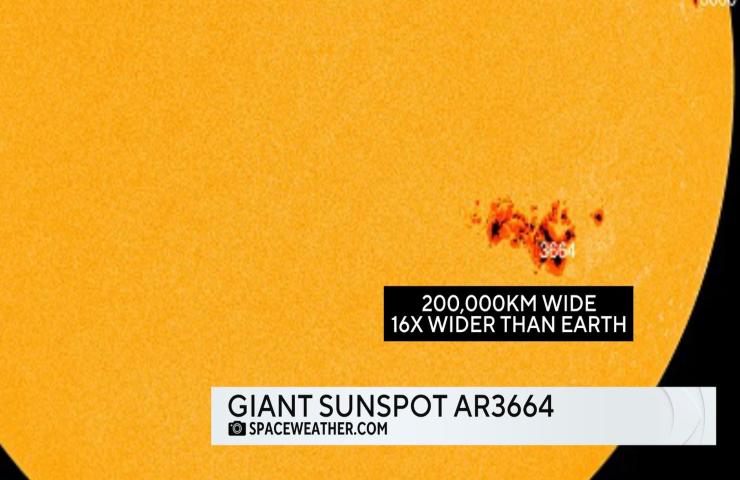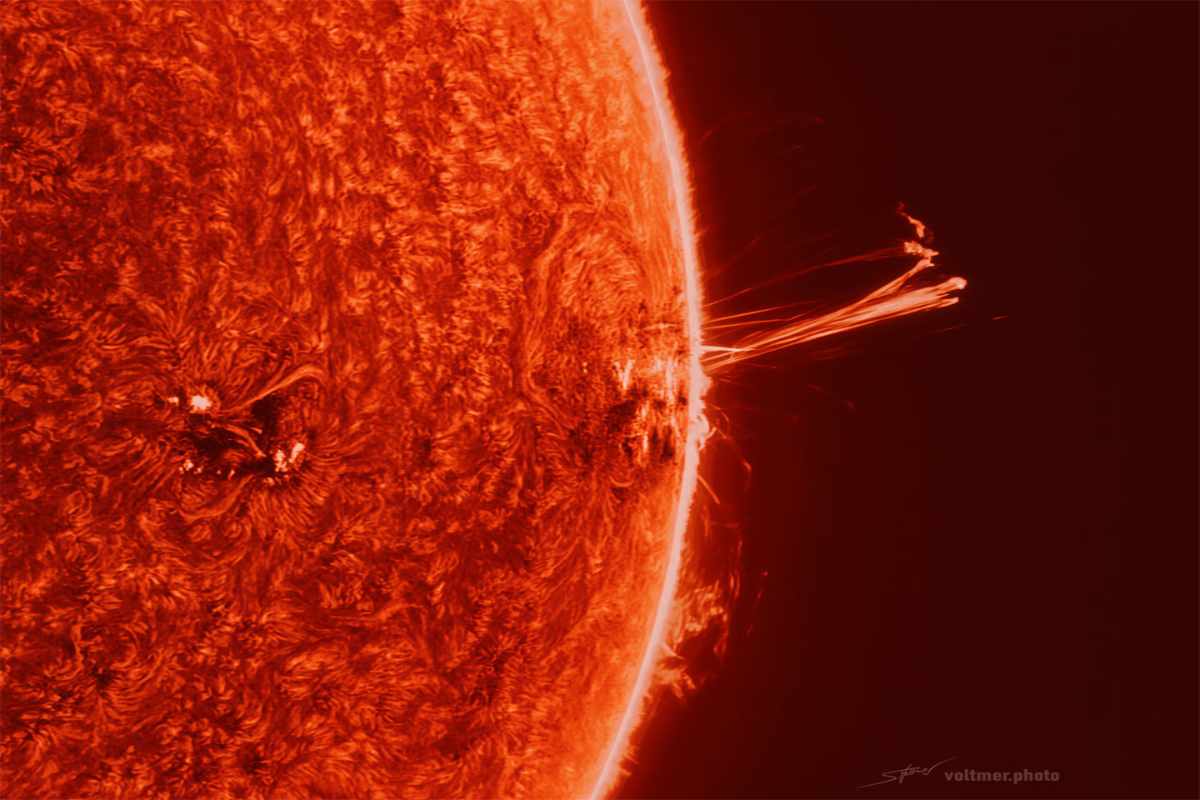Among the reasons that led to the appearance of the so-called “aurora borealis” that were observed in our skies in recent days.
Pictures of the northern lights went viral in Italy on May 10 and 11 Web It amazed thousands of users, causing us to look up above our heads. A unique opportunity could return to our skies within the next few hours, but few know that this phenomenon arose thanks to a G4 electromagnetic storm, caused in turn by a giant sunspot that raised several dangers.
The sunspot that spewed magnetic waves toward Earth for several days is called AR3664. We’re talking about a diameter roughly corresponding to 16 Earths, with the potential for solar storms and the risk of power outages and damage to satellites. The first eruption occurred around mid-May, coinciding with the aurora borealis we were all aware of: but the risks assumed by experts were different.
What consequences can sunspot AR3664 have?
Sunspot AR3664 has a diameter of 200 thousand kilometers, and it appeared on the sun in recent days. From the area identified by experts, the sunspots likely caused five coronal mass ejections (CME) towards the planet, which around May 10 and 12 generated a phenomenon similar to the northern lights. Various Italian regions saw skies dyed in pastel colours, including the Castelli Romani region. But how was this episode possible? According to experts, the sunspots are classified as “Carrington” and are the largest ever. If this past event represented a true electromagnetic blackout, such as the one in 1859, then until now there have been no new electromagnetic storms of devastating magnitude.

This is because, as he explained Spaceweather.com“Giant sunspot AR3664 is no longer facing Earth.” The Sun is currently heading towards the maximum peak of its magnetic activity expected between the end of 2024 and the summer of 2025. But this does not mean that we are completely risk-free.
Damage to electronic equipment and malfunctions
However, this information should not be underestimated, because the repercussions of a magnetic storm, such as the one supposed in mid-May, could be of a different nature in the long term. The specialized space weather portal run by American astrophysicist Tony Phillips explained that Carrington-type sunspots passed over the western edge of the sun, which is an area of the sun magnetically linked to our planet. Once these waves reach the ground, with an average speed of 8 min, they can generate small short circuits in electronic devices.
The greatest risks are to astronauts engaged in “spacewalks” or extravehicular activities, and to pilots and passengers on scheduled flights, who during the phenomenon last May could have been exposed to an S2 radiation storm (on a scale of 5 ) with a probability of 60%. Radiation, which can also increase the risk of biological complications and cancer. It can also detect damage to satellites, which cannot be used at all for high frequency communications.


“Internet trailblazer. Travelaholic. Passionate social media evangelist. Tv advocate.”







More Stories
Science says that your name can influence the course of your life
Meghan Markle, what she does every day to stay fit: Her secret is a flexible diet
Italy in stunning clarity: watch the video taken from space